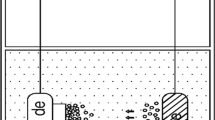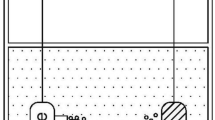Abstract
Microstructural functional surfaces play an important role in energy conversion applications including power generation, air conditioning, and thermal management of electronics through the boiling process. In this study, multi-scale microgroove surfaces were fabricated by the combination of wire electrical discharge machining (WEDM) and electrical discharge shaped machining (EDSM) to achieve a better boiling performance. The WEDM, with the advantage of high efficiency, was used to fabricate the first microgroove array, and rougher surfaces were formed by intense discharge. A wavy electrode was used in EDSM to fabricate the second microgroove array. Reentrant cavities at the intersections of microgrooves and rougher micro fins with spacing distribution were formed after EDSM. The boiling performance of the multi-scale microgroove surface was studied with water as the working medium under atmospheric pressure. The results indicated that the boiling performance of the microgroove surface is significantly enhanced. The critical heat flux and maximum heat transfer coefficient of microgroove surface were higher than the surfaces fabricated only by WEDM or EDSM, which were 2.34 and 3.29 times that of smooth copper plate, respectively. This study demonstrated that the combination of WEDM and EDSM is a convenient and effective method to fabricate high-performance microgroove boiling surfaces.
Similar content being viewed by others
References
Khan S A, Sezer N, Ismail S, et al. Design, synthesis and nucleate boiling performance assessment of hybrid micro-nano porous surfaces for thermal management of concentrated photovoltaics (CPV). Energy Convers Manage, 2019, 195: 1056–1066
Deng Y C, Quan Z H, Zhao Y H, et al. Experimental investigations on the heat transfer characteristics of micro heat pipe array applied to flat plate solar collector. Sci China Tech Sci, 2013, 56: 1177–1185
Gouda R K, Pathak M, Khan M K. Pool boiling heat transfer enhancement with segmented finned microchannels structured surface. Int J Heat Mass Transfer, 2018, 127: 39–50
Sun Y, Chen G, Zhang S, et al. Pool boiling performance and bubble dynamics on microgrooved surfaces with reentrant cavities. Appl Thermal Eng, 2017, 125: 432–442
Sun Y L, Liang F Y, Tang Y, et al. Effect of stagger angle on capillary performance of microgroove structures with reentrant cavities. Sci China Tech Sci, 2021, 64: 1436–1446
Sun Y, Shuai M, Zhang S, et al. Hierarchically 3D-textured copper surfaces with enhanced wicking properties for high-power cooling. Appl Thermal Eng, 2020, 178: 115650
Deng D X, Chen X L, Chen L, et al. Preparation of porous structures on copper microchannel surfaces by laser writing. Sci China Tech Sci, 2019, 62: 2261–2270
Wong K K, Leong K C. Saturated pool boiling enhancement using porous lattice structures produced by selective laser melting. Int J Heat Mass Transfer, 2018, 121: 46–63
Sun Y, Tang Y, Zhang S, et al. A review on fabrication and pool boiling enhancement of three-dimensional complex structures. Renew Sustain Energy Rev, 2022, 162: 112437
Mehdikhani A, Moghadasi H, Saffari H. An experimental investigation of pool boiling augmentation using four-step electrodeposited micro/nanostructured porous surface in distilled water. Int J Mech Sci, 2020, 187: 105924
Lei J, Wu X, Wang Z, et al. Electrical discharge machining of micro grooves using laminated disc electrodes made of Cu and Sn foils. J Mater Process Tech, 2019, 271: 455–462
Tang H, Xia L, Tang Y, et al. Fabrication and pool boiling performance assessment of microgroove array surfaces with secondary micro-structures for high power applications. Renew Energy, 2022, 187: 790–800
Kumar S, Singh R, Singh T P, et al. Surface modification by electrical discharge machining: A review. J Mater Process Tech, 2009, 209: 3675–3687
Zhou W, Hu X, Mao L, et al. Markedly enhanced pool boiling heat transfer performance on maicropaorous copper surfaces fabricated utilizing a facile wire cutting process. Appl Thermal Eng, 2020, 165: 114396
Gheitaghy A M, Samimi A, Saffari H. Surface structuring with inclined minichannels for pool boiling improvement. Appl Thermal Eng, 2017, 126: 892–902
Heidary A, Moghadasi H, Saffari H. Impact of dimensional characteristics of low-conductive channels on the enhancement of pool boiling: An experimental analysis. Int J Mech Sci, 2021, 209: 106710
Dhadda G, Hamed M, Koshy P. Electrical discharge surface texturing for enhanced pool boiling heat transfer. J Mater Process Tech, 2021, 293: 117083
Walunj A, Sathyabhama A. Comparative study of pool boiling heat transfer from various microchannel geometries. Appl Thermal Eng, 2018, 128: 672–683
Mo D C, Yang S, Luo J L, et al. Enhanced pool boiling performance of a porous honeycomb copper surface with radial diameter gradient. Int J Heat Mass Transfer, 2020, 157: 119867
Lei Z, Liu B, Xu P, et al. The pool boiling heat transfer and critical vapor column coalescence mechanism of block-divided micro-structured surfaces. Int J Heat Mass Transfer, 2020, 150: 119362
Duan L, Liu B, Qi B, et al. Pool boiling heat transfer on silicon chips with non-uniform micro-pillars. Int J Heat Mass Transfer, 2020, 151: 119456
Jiang K, Wu X, Lei J, et al. Investigation on the geometric evolution of microstructures in EDM with a composite laminated electrode. J Cleaner Product, 2021, 298: 126765
Lei J, Wu X, Zhou Z, et al. Sustainable mass production of blind multi-microgrooves by EDM with a long-laminated electrode. J Cleaner Product, 2021, 279: 123492
Almeida S, Mo J, Bil C, et al. Comprehensive servo control strategies for flexible and high-efficient wire electric discharge machining. A systematic review. Precision Eng, 2021, 71: 7–28
Cooke D, Kandlikar S G. Effect of open microchannel geometry on pool boiling enhancement. Int J Heat Mass Transfer, 2012, 55: 1004–1013
Taylor, John R. An Introduction to Error Analysis. Sausalito: University Science Books, 1982
Wen R, Li Q, Wang W, et al. Enhanced bubble nucleation and liquid rewetting for highly efficient boiling heat transfer on two-level hierarchical surfaces with patterned copper nanowire arrays. Nano Energy, 2017, 38: 59–65
Bjorg R W, Hall G R, Rohsenow W M. Correlation of forced convection boiling heat transfer data. Int J Heat Mass Transfer, 1982, 25: 753–757
Cho H J, Preston D J, Zhu Y, et al. Nanoengineered materials for liquid-vapour phase-change heat transfer. Nat Rev Mater, 2016, 2: 16092
Moghadasi H, Saffari H. Experimental study of nucleate pool boiling heat transfer improvement utilizing micro/nanoparticles porous coating on copper surfaces. Int J Mech Sci, 2021, 196: 106270
Carey V P. Liquid-Vapor Phase-Change Phenomena: An Introduction to the Thermophysics of Vaporization and Condensation Processes in Heat Transfer Equipment. Boca Raton: CRC Press, 2018
El-Genk M S, Suszko A. Effects of inclination angle and liquid sub-cooling on nucleate boiling on dimpled copper surfaces. Int J Heat Mass Transfer, 2016, 95: 650–661
Liu H, Zhang C, Wang J, et al. Critical heat flux enhancement using composite porous structure produced by selective laser melting. Appl Thermal Eng, 2021, 197: 117396
Bai L, Zhang L, Lin G, et al. Pool boiling with high heat flux enabled by a porous artery structure. Appl Phys Lett, 2016, 108: 233901
Jaikumar A, Kandlikar S G. Ultra-high pool boiling performance and effect of channel width with selectively coated open microchannels. Int J Heat Mass Transfer, 2016, 95: 795–805
Li J, Zhu G, Kang D, et al. Endoscopic visualization of contact line dynamics during pool boiling on capillary-activated copper microchannels. Adv Funct Mater, 2020, 31: 2006249
Liu H, Wang J, Gu Z, et al. Enhancement of pool boiling heat transfer using 3D-printed groove structure. Int J Heat Mass Transfer, 2022, 183: 122155
Long J, Liu Z, Lin H, et al. Pool boiling heat transfer and bubble dynamics over V-shaped microchannels and micropyramids: Does high aspect ratio always benefit boiling? Appl Thermal Eng, 2022, 201: 117796
Lin L, Hu Y, Zhu M, et al. Boiling heat transfer on the micro-nano structured surface fabricated by mechanical sandblasting/alkali-assisted oxidation. Int J Heat Mass Transfer, 2022, 183: 122079
Li Q, Lan Z, Chun J, et al. Composite porous surfaces of microcavities for enhancing boiling heat transfer. Int J Heat Mass Transfer, 2021, 177: 121513
Author information
Authors and Affiliations
Corresponding author
Additional information
This work was supported by the National Natural Science Foundation of China (Grant No. 51905352), the Natural Science Foundation of Guangdong Province (Grant No. 2020A1515011039), the Excellent Science and Technology Creative Talent Training Program of Shenzhen (Grant No. RCBS20210609103819021), and the Basic Research Foundation of Shenzhen (Grant No. JCYJ20190808144003701).
Rights and permissions
About this article
Cite this article
Tang, H., Guo, B., Tang, Y. et al. Fabrication and boiling heat transfer characterization of multi-scale microgroove surfaces. Sci. China Technol. Sci. 65, 3010–3019 (2022). https://doi.org/10.1007/s11431-022-2191-y
Received:
Accepted:
Published:
Issue Date:
DOI: https://doi.org/10.1007/s11431-022-2191-y




